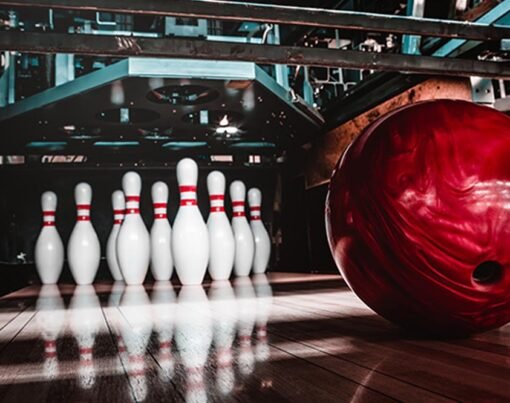The craftsmanship that goes into the creation of custom chef knives represent a blend of functionality and aesthetics, giving these tools their distinct character. High-end chef knives, particularly customized ones, are seen not merely as kitchen tools, but as personalized expressions of culinary artistry. Numerous decisions must be made for the creation of a knife, from the selection of materials to the precise techniques employed by highly skilled craftsmen. Such a carefully orchestrated process results in knives that aren’t just visually stunning, but also offer superior performance and a high degree of customization to suit individual needs.
The history of chef knives extends back to ancient times when the foundation for today’s cutlery was laid. Each civilization introduced its unique material, shape, and techniques, bringing about the eclectic mix of variations we find today. This article discusses the detailed processes involved in the craftsmanship of custom chef knives, the artistic dimensions they exhibit, and the significance of their personalization in the gastronomic world.
The Crafting of Custom Chef Knives
The process of crafting a custom chef knife is a delicate balance between carefully selected materials and an expert artisan’s hands. To start, the craftsman chooses the most suitable material for the knife blade. This is usually a high-grade stainless steel or carbon steel. The choice of material impacts the knife’s performance, longevity, and sharpness retention. The artisan then applies a combination of traditional and modern techniques to shape and sharpen the blade. Depending on the desired design, this could involve a detailed procedure of folding and hammering the steel.
After the shaping and sharpening come the finishing touches, which are meticulous steps that define the knife’s beauty and uniqueness. This might involve polishing the blade to a mirror-like finish or adding a patina for a more rustic aesthetic. Making custom chef knives, such as Damascus knives, requires immense skill, precision, and keen attention to detail. Each knife stands as evidence of the craftsman’s expertise, patience, and dedication to crafting a tool that’s as useful as it is aesthetically pleasing.
Handmade custom knives also bear a distinct advantage over their machine-made rivals. Each custom knife is unique; its minor imperfections show its handmade origin, which adds to its appeal and grace. This unique quality paired with the high-quality materials used, imparts a clear sense of superior performance and durability to these knives.
How Material and Shape Affect Knife Utility
The world of chef knives is vast and varied, marked by numerous types designed to meet specific cooking needs and preferences. Some of the most common types include the chef’s knife, a multipurpose tool with a broad, tapered shape and fine sharp edge perfect for a variety of tasks. The slicing and carving knives with their long, thin blades are perfect for cutting thin, even slices of meat, while the bread knife’s serrated blade is designed for sawing through crusty loaves without disturbing the soft interior. For delicate tasks like peeling and mincing, the paring knife and utility knife come in handy, given their smaller size and pointed tip.
The type of material used and the shape of a knife significantly affect its utility. Blades made from carbon steel are known for their extreme sharpness, ideal for precision tasks. However, they require more care to keep them from rusting. Stainless steel, on the other hand, is more durable and resistant to rust but might not retain edge sharpness as well as carbon steel.
The shape of the knife greatly influences its function. For instance, a narrow, tapered blade like that of a boning knife is perfect for precision tasks like deboning poultry and meat. In contrast, a wide, hefty blade of a chef’s knife is meant for heavy-duty tasks such as chopping and dicing. Details like this determine the knife’s performance, making each type of chef knife unique in its form and function.
The Significance and Benefits of Using Custom Chef Knives
Custom chef knives carry a significant amount of value and utility for professional chefs and home cooks alike. On the functional side, these knives are designed for optimal performance, allowing for a more efficient and precise kitchen experience. The meticulous craftsmanship ensures the knife retains its sharpness over time, reducing the energy exerted during slicing and chopping.
In terms of customization, custom chef knives truly shine. Personalization options offered by knife makers allow chefs to adjust the tool to their specific needs and preferences. These customizations include monograms, or name engravings, custom-shaped handles for enhanced comfort and grip, and the choice of materials and designs to suit the chef’s aesthetic preferences. This makes the knife truly unique to its user, enhancing the user’s connection with their tool. It’s this blend of practicality, quality, and personalization that gives custom chef knives their irreplaceable value in the culinary world.
Creating custom chef knives requires a fine blend of craftsmanship, artistry, and personalization. Craftsmen put their heart and soul into each piece, fine-tuning every detail to perfection using superior materials and techniques. The resulting tools are more than mere kitchen utensils; they’re personal statements of taste and culinary passion. These knives carry a sense of individuality and finesse that sets them apart from their mass-produced counterparts, giving chefs a unique, enjoyable cooking experience. From the perspective of functionality, they serve as an indispensable part of any professional kitchen, lending efficiency, precision, and consistency to culinary creations. Each knife, in its uniqueness, enhances its user’s connection with their craft, making each culinary venture a more personal and satisfying experience. Their high-quality materials and exceptional craftsmanship allow them to carry significant value as future heirlooms or personal brand statements. Their significance goes beyond their prima facie function, making them true embodiments of individual culinary stories.










